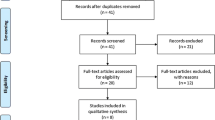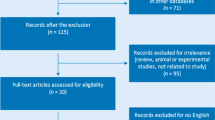Abstract
The objective of this study is to identify single-nucleotide polymorphisms (SNPs) predictors of treatment nonresponse to the first anti-TNF-alpha agent in ankylosing spondylitis (AS). Patients were classified as “nonresponders” if they failed to achieve improvement ≥50 % of the initial BASDAI. We selected candidate SNPs previously reported, associated with susceptibility or pathogenesis of AS and with other spondylarthropaties (SpAs). The predictors of nonresponse were modeled with multiple logistic regression. The predictive power of the genetic model of nonresponse to treatment was tested with AUC-ROC. One hundred and twenty-one (121) AS patients fulfilled the inclusion criteria. Of the candidate SNPs tested for association with treatment effectiveness, five independent predictors were identified: rs917997, rs755622, rs1800896, rs3740691, and rs1061622. The genetic model of nonresponse to treatment had a predictive power of 0.77 (95 % CI 0.68–0.86). Our study identified several polymorphisms which could be the useful genetic biomarkers in predicting nonresponse to anti-TNF-alpha therapy.


Similar content being viewed by others
References
Wright V (1978) Seronegative polyarthritis: a unified concept. Arthritis Rheum 21:619–633
Braun J, Bollow M, Neure L et al (1995) Use of immunohistologic and in situ hybridization techniques in the examination of sacroiliac joint biopsy specimens from patients with ankylosing spondylitis. Arthritis Rheum 38:499–505
Braun J, Xiang J, Brandt J et al (2000) Treatment of spondyloarthropathies with antibodies against tumor necrosis factor α: first clinical and laboratory experiences. Ann Rheum Dis 59:i85–i89
Maksymowych W (2010) Disease modification in ankylosing spondylitis. Nat Rev Rheumatol 6:75–81
van der Heijde D, Dijkmans B, Geusens P et al (2005) Efficacy and safety of infliximab in patients with ankylosing spondylitis: results of a randomized, placebo-controlled trial (ASSERT). Arthritis Rheum 52:582–591
Davis JC Jr, van der Heijde D, Braun J et al (2003) Recombinant human tumor necrosis factor receptor (etanercept) for treating ankylosing spondylitis: a randomized, controlled trial. Arthritis Rheum 48:3230–3236
van der Heijde D, Kivitz A, Schiff MH et al (2006) Efficacy and safety of adalimumab in patients with ankylosing spondylitis: results of a multicenter, randomized, double-blind, placebo-controlled trial. Arthritis Rheum 54:2136–2146
Braun J, Deodhar A, Inman RD et al (2012) Golimumab administered subcutaneously every 4 weeks in ankylosing spondylitis: 104-week results of the GO-RAISE study. Ann Rheum Dis 71:661–667
Davis JC Jr, van der Heijde DM, Dougados M et al (2005) Baseline factors that influence ASAS 20 response in patients with ankylosing spondylitis treated with etanercept. J Rheumatol 32:1751–1754
Rudwaleit M, Listing J, Brandt J, Braun J, Sieper J (2004) Prediction of a major clinical response (BASDAI 50) to tumour necrosis factor alpha blockers in ankylosing spondylitis. Ann Rheum Dis 63:665–670
Vastesaeger N, van der Heijde D, Inman RD et al (2011) Predicting the outcome of ankylosing spondylitis therapy. Ann Rheum Dis 70:973–981
Rudwaleit M, Claudepierre P, Wordsworth P et al (2009) Effectiveness, safety, and predictors of good clinical response in 1,250 patients treated with adalimumab for active ankylosing spondylitis. J Rheumatol 36:801–810
Lord PA, Farragher TM, Lunt M, Watson KD, Symmons DP, Hyrich KL (2010) Predictors of response to anti-TNF therapy in ankylosing spondylitis: results from the British Society for Rheumatology Biologics Register. Rheumatology (Oxford) 49:563–570
Arends S, Brouwer E, van der Veer E et al (2011) Baseline predictors of response and discontinuation of tumor necrosis factor-alpha blocking therapy in ankylosing spondylitis: a prospective longitudinal observational cohort study. Arthritis Res Ther 20(13):R94
Can M, Aydın SZ, Niğdelioğlu A, Atagündüz P, Direskeneli H (2012) Conventional DMARD therapy (methotrexate–sulphasalazine) may decrease the requirement of biologics in routine practice of ankylosing spondylitis patients: a real-life experience. Int J Rheum Dis 15:526–530
Chen J, Veras MM, Liu C, Lin J (2013) Methotrexate for ankylosing spondylitis. Cochrane Database Syst Rev 28(2):CD004524
Chen J, Liu C (2005) Sulfasalazine for ankylosing spondylitis. Cochrane Database Syst Rev 18(2):CD004800
Baraliakos X, Brandt J, Listing J et al (2005) Outcome of patients with active ankylosing spondylitis after two years of therapy with etanercept: clinical and magnetic resonance imaging data. Arthritis Rheum 53:856–863
Baraliakos X, Listing J, Fritz C et al (2011) Persistent clinical efficacy and safety of infliximab in ankylosing spondylitis after 8 years-early clinical response predicts long-term outcome. J Rheumatol (Oxford) 50:1690–1699
Poddubnyy DA, Märker-Hermann E, Kaluza-Schilling W et al (2011) Relation of HLA-B27, tumor necrosis factor-α promoter gene polymorphisms, and T cell cytokine production in ankylosing spondylitis—a comprehensive genotype-phenotype analysis from an observational cohort. J Rheumatol 38:2436–2441
Seitz M, Wirthmu¨ ller U, Moller B, Villiger PM (2007) The −308 tumour necrosis factor-gene polymorphismpredicts therapeutic response to TNF-blockers in rheumatoid arthritis and spondyloarthritis patients. Rheumatology 46:93–96
Collantes E, Zarco P, Munoz E et al (2007) Disease pattern of spondyloarthropathies in Spain: description of the first national registry (REGISPONSER) extended report. Rheumatology (Oxford) 46:1309–1315
Schiotis R, Font P, Escudero E et al (2011) Usefulness of a centralized system of data collection for the development of an international multicentre registry of spondyloarthritis. Rheumatology (Oxford) 50:132–136
Van der Linden S, Valkenburg HA, Cats A (1984) Evaluation of diagnostic criteria for ankylosing spondylitis. A proposal for modification of the New York criteria. Arthritis Rheum 27:361–368
Fan JB, Oliphant A, Shen R et al (2003) Highly parallel SNP genotyping. Cold Spring Harb Symp Quant Biol 68:69–78
Paynter RA, Skibola DR, Skibola CF et al (2006) Accuracy of multiplexed Illumina platform-based single-nucleotide polymorphism genotyping compared between genomic and whole genome amplified DNA collected from multiple sources. Cancer Epidemiol Biomarkers Prev 15:2533–2536
Reich D, Patterson N, De Jager PL et al (2005) A whole-genome admixture scan finds a candidate locus for multiple sclerosis susceptibility. Nat Genet 37:1113–1118
Barrett JC, Fry B, Maller J, Daly MJ (2005) Haploview: analysis and visualization of LD and haplotype maps. Bioinformatics 15(21):263–265
Glintborg B, Østergaard M, Krogh NS et al (2013) Clinical response, drug survival and predictors thereof in 432 ankylosing spondylitis patients after switching tumour necrosis factor α inhibitor therapy: results from the Danish nationwide DANBIO registry. Ann Rheum Dis 72:1149–1155
Okamura H, Tsutsui H, Kashiwamura S, Yoshimoto T, Nakanishi K (1998) Regulation of interferon-_ production by IL-12 and IL-18. Curr Opin Immunol 10:259–264
de Jager W, Vastert SJ, Beekman JM et al (2009) Defective phosphorylation of interleukin-18 receptor beta causes impaired natural killer cell function in systemic-onset juvenile idiopathic arthritis. Arthritis Rheum 60:2782–2793
Hunt KA, Zhernakova A, Turner G et al (2008) Newly identified genetic risk variants for celiac disease related to the immune response. Nat Genet 40:395–402
Zhernakova A, Festen EM, Franke L et al (2008) Genetic analysis of innate immunity in Crohn’s disease and ulcerative colitis identifies two susceptibility loci harboring CARD9 and IL18RAP. Am J Hum Genet 82:1202–1210
Eder L, Chandran V, Ueng J et al (2010) Predictors of response to intra-articular steroid injection in psoriatic arthritis. Rheumatology (Oxford) 49:1367–1373
Radstake TR, Sweep FC, Welsing P et al (2005) Correlation of rheumatoid arthritis severity with the genetic functional variants and circulating levels of macrophage migration inhibitory factor. Arthritis Rheum 52:3020–3029
Lauten M, Matthias T, Stanulla M, Beger C, Welte K, Schrappe M (2002) Association of initial response to prednisone treatment in childhood acute lymphoblastic leukaemia and polymorphisms within the tumor necrosis factor and the interleukin-10 genes. Leukemia 16:1437–1442
Middleton PG, Taylor PR, Jackson G, Proctor SJ, Dickinson AM (1998) Cytokine gene polymorphisms associating with severe acute graft-versus-host disease in HLA-identical sibling transplants. Blood 92:3943–3948
de Paz B, Alperi-López M, Ballina-García FJ, Prado C, Mozo L, Gutiérrez C, Suárez A (2010) Interleukin 10 and tumor necrosis factor-alpha genotypes in rheumatoid arthritis-association with clinical response to glucocorticoids. J Rheumatol 37:503–511
Wajant H, Pfizenmaier K, Scheurich P (2003) Tumor necrosis factor signaling. Cell Death Differ 10:45–65
Grell M, Douni E, Wajant H et al (1995) The transmembrane form of tumor necrosis factor is the prime activating ligand of the 80 kDa tumor necrosis factor receptor. Cell 83:793–802
Kim EY, Priatel JJ, Teh SJ, Teh HS (2006) TNF receptor type 2 (p75) Functions as a costimulator for antigen-driven T cell responses in vivo. J Immunol 176:1026–1035
Cope AP, Aderka D, Doherty M et al (1992) Increased levels of soluble tumor necrosis factor receptors in the sera and synovial fluid of patients with rheumatic diseases. Arthritis Rheum 35:1160–1169
Deleuran BW, Chu C-Q, Field M et al (1992) Localization of tumor necrosis factor receptors in the synovial tissue and cartilage-pannus junction in patients with rheumatoid arthritis: implications for local actions of tumor necrosis factor. Arthritis Rheum 35:1170–1178
Tolusso B, Sacco S, Gremese E, La Torre G, Tomietto P, Ferraccioli GF (2004) Relationship between the tumor necrosis factor receptor II (TNF-RII) gene polymorphism and sTNF-RII plasma levels in healthy controls and in rheumatoid arthritis. Hum Immunol 65:1420–1426
Glossop JR, Dawes PT, Nixon NB, Mattey DL (2005) Polymorphism in the tumour necrosis factor receptor II gene is associated with circulating levels of soluble tumour necrosis factor receptors in rheumatoid arthritis. Arthritis Res Ther 7:R1227–R1234
Fabris M, Tolusso B, Di Poi E, Assaloni R, Sinigaglia L, Ferraccioli G (2002) Tumor necrosis factor-alpha receptor II polymorphism in patients from southern Europe with mild-moderate and severe rheumatoid arthritis. Rheumatology 29:1847–1850
Pedersen SJ, Sørensen IJ, Garnero P et al (2011) ASDAS, BASDAI and different treatment responses and their relation to biomarkers of inflammation, cartilage and bone turnover in patients with axial spondyloarthritis treated with TNFα inhibitors. Ann Rheum Dis 70:1375–1381
Acknowledgments
Authors would like to thank Pedro Zarco Montejo, Hospital FUNDACION ALCORCÓN, Jordi Gratacós Masmitjá, Hospital PARC TAULÍ, Xavier Juanola Roura Hospital BELLVITGE, Enrique Batlle Gualda, University Hospital ALICANTE, Pilar Fernández Dapica Hospital DOCE DE OCTUBRE, Luis F. Linares Ferrando Hospital VIRGEN DE LA ARRIXACA, Mª Elia Brito Brito Hospital RAMÓN Y CAJAL, Eduardo Cuende Quintana University Hospital PRÍNCIPE DE ASTURIAS, Carlos Vázquez Galeano Hospital SAN JORGE, Enrique Calero Secall University Hospital CARLOS HAYA, Carlos Rodríguez Lozano Hospital DOCTOR NEGRÍN, Rubén Queiro Silva University Hospital CENTRAL DE ASTURIAS, Antonio Juan Más Hospital. FUNDACIÓN SON LLATZER, Cristina Medrano Le Quement Hospital. INTERNACIONAL MERIMAR, Enrique Ornilla University Hospital NAVARRA, Carlos Montilla Morales University Hospital VIRGEN DE LA VEGA, Teresa Clavaguera Poch Hospital PALAMÓS, Mª Cruz Fernández Espartero Hospital MÓSTOLES, for providing helpful information about the patients included in REGISPONSER-AS cohort. This work was supported by the Spanish Ministry of Science and Innovation (Project PSE-01000-2006-1) and by Progenika Biopharma S.A. The author SR wishes to thank Prof. Simion Simon, PhD at University Babes Bolyai, Cluj-Napoca, for the internship at University Hospital, “Reina Sofia”, Cordoba, Spain provided from program cofinanced by The SECTORAL OPERATIONAL PROGRAMME HUMAN RESOURCES DEVELOPMENT, Contract POSDRU 6/1.5/S/3— “Doctoral studies: through science toward society”.
Conflict of interest
MS., N.B., M.A., A.M. and D.T. are currently employees of Progenika Biopharma, SA. A.S. is supported by an unrestricted Grant from Pfizer. This does not alter our compliance with all the policies on sharing data and materials. All the other authors have no conflicts of interest to declare.
Author information
Authors and Affiliations
Corresponding author
Additional information
This study was carried out on behalf of the REGISPONSER Study Group.
Rights and permissions
About this article
Cite this article
Schiotis, R., Sánchez, A., Escudero, A. et al. Candidate’s single-nucleotide polymorphism predictors of treatment nonresponse to the first anti-TNF inhibitor in ankylosing spondylitis. Rheumatol Int 34, 793–801 (2014). https://doi.org/10.1007/s00296-013-2913-y
Received:
Accepted:
Published:
Issue Date:
DOI: https://doi.org/10.1007/s00296-013-2913-y




